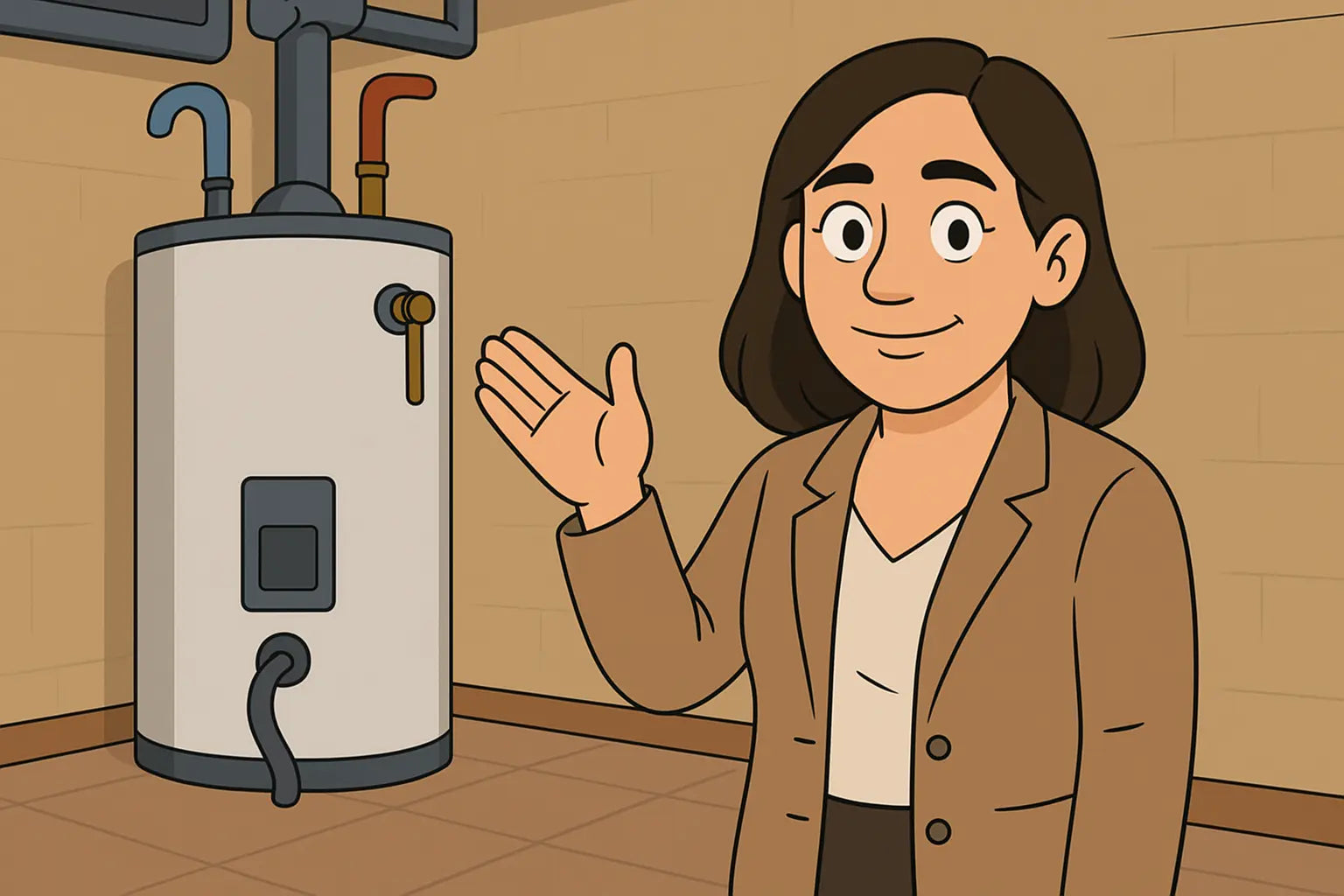Hey There, Water-Wise Warriors! 💧
Savvy Mavi here, your go-to gal for all things home improvement (with a sparkle of sass and a splash of common sense). Today, we’re zooming in on a not-so-glamorous but super important part of your plumbing setup—the expansion tank.
If you’ve got a 50–60 gallon electric water heater, you might’ve heard a plumber suggest one. But do you really need it, or are they just upselling you? Let’s dig into the truth, bust some myths, and help you make the right call for your home—and your wallet. 💸
What’s an Expansion Tank Anyway?
An expansion tank is a small, pressurized tank installed near your water heater. It helps absorb excess water volume created when water heats up and expands (a concept called thermal expansion). Without it, that pressure has nowhere to go but back into your plumbing system—yikes! 😬
According to Work's Plumbing, that excess pressure can damage your pipes, fixtures, and even the water heater itself over time.
Do All Homes Need One? Nope—Here’s Why
If you’re on a closed plumbing system (meaning water can’t flow back into the main), then YES—you likely need an expansion tank. But if you’re on an open system (common in older homes), your water has somewhere to go.
To figure it out, you can:
-
Check your water meter for a backflow preventer
-
Ask your plumber about your home’s setup
-
Call your local utility—many will tell you if you’re on a closed system
The International Plumbing Code actually requires expansion tanks for closed systems. So it’s not just a best practice—it could be code where you live. 📜
How Expansion Tanks Work (And Why That Matters for 50–60 Gallon Units)
Let’s say you’ve got a 50-gallon electric water heater heating water to 120°F. That water expands—usually by about half a gallon or more depending on temperature and pressure. Now multiply that over several daily cycles of heating and cooling.
If you don’t have a place for that extra volume to go, your TPR (Temperature & Pressure Relief) valve could leak. Or worse—your tank could stress out and wear down faster. An expansion tank acts like a buffer zone for that excess water volume.
Read more about the science behind thermal expansion in this handy explainer from Dan Wood Services.
How to Know If Your Home Needs One (The Easy Way 🕵️)
Try this:
-
Heat your water heater until it's fully hot.
-
Turn off the supply and open a hot tap.
-
If water keeps flowing or spurts strangely, pressure is building.
-
That’s a red flag 🚩 you might benefit from an expansion tank.
Or just use a pressure gauge. If pressure climbs above 80 psi, that’s too high. According to the Plumbing-Heating-Cooling Contractors Association (PHCC), anything above 80 psi may void water heater warranties.
What Size Expansion Tank Do You Need?
For most 50–60 gallon units, a 2-gallon thermal expansion tank will do the trick, assuming typical residential pressure of 40–60 psi.
But if your incoming pressure is high or if you’ve got other pressure devices in your system (like a water softener), consult a plumber or use a size calculator like Amtrol’s expansion tank sizing tool. 📏
Installing an Expansion Tank: DIY or Pro Job?
Here’s the truth: installing one isn’t rocket science, but it does require some plumbing know-how. If you’re already installing a new electric water heater, it’s the perfect time to add the tank. Most setups need:
-
A tee fitting on the cold water line
-
A secure bracket or hanger
-
Teflon tape + a wrench
But if you're not confident with cutting copper or working with PEX, it’s worth calling in a licensed pro. Your water heater warranty might thank you later. 😉
Check out this straightforward DIY tutorial from The Spruce’s team.
What Happens If You Skip It?
If you need an expansion tank and don’t install one, here’s what could happen:
-
Premature wear on your water heater ⚠️
-
TPR valve leakage or failure
-
Damage to valves, pipes, or your washing machine hoses
-
Voided water heater warranties (yes, really!)
Replacing a $40–$80 expansion tank is way cheaper than replacing a $900+ water heater. Just sayin’. 💁
🔧 Final Thoughts from Your Girl, Savvy Mavi
So, do you really need an expansion tank with your 50–60 gallon electric water heater? If your home has a closed-loop plumbing system and you're dealing with water pressure fluctuations, the answer is a big ol’ yes 🙌. It’s a small investment that saves your heater, your pipes, and your peace of mind.
Whether you’re swapping out a tired old unit, upgrading your home’s hot water game, or just doing some smart research (go you!), don’t forget to match the right setup to your system. That means asking your local code official, checking water pressure, and giving your expansion tank a regular once-over. You’ve got this 💪.
And if you’re shopping for a reliable, high-quality electric water heater in the 50–60 gallon sweet spot, I gotchu! Head over to The Furnace Outlet’s Electric Water Heater Collection for a lineup of models that are performance-ready and wallet-approved 💸.
Worried about wiring mistakes that can fry your 5-60 gallon water heater? Visit my guide: Wired Wrong.
Until next time—stay savvy, stay warm, and never underestimate the power of hot water at the perfect pressure! 🚿✨
—Savvy Mavi 💁🔧







